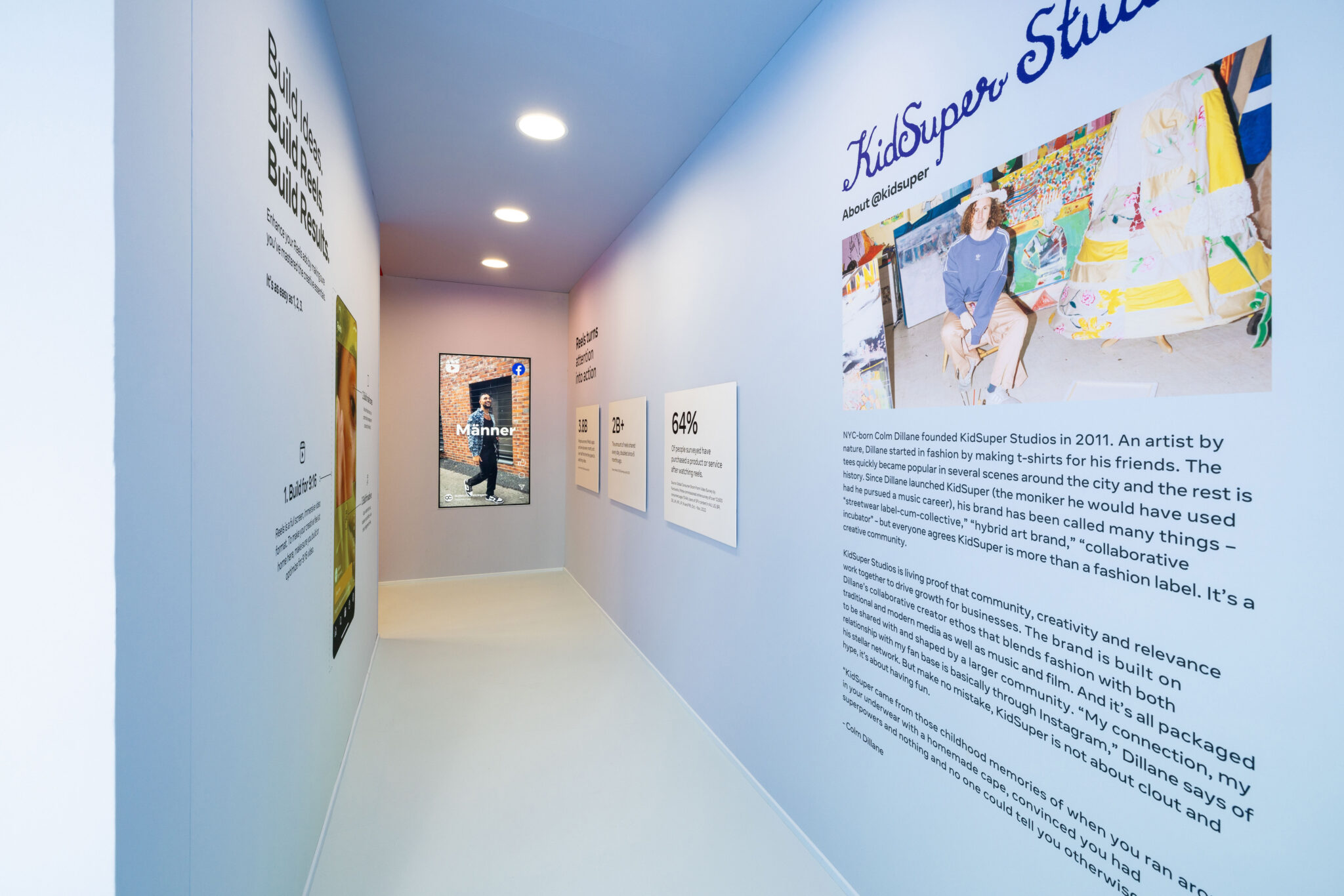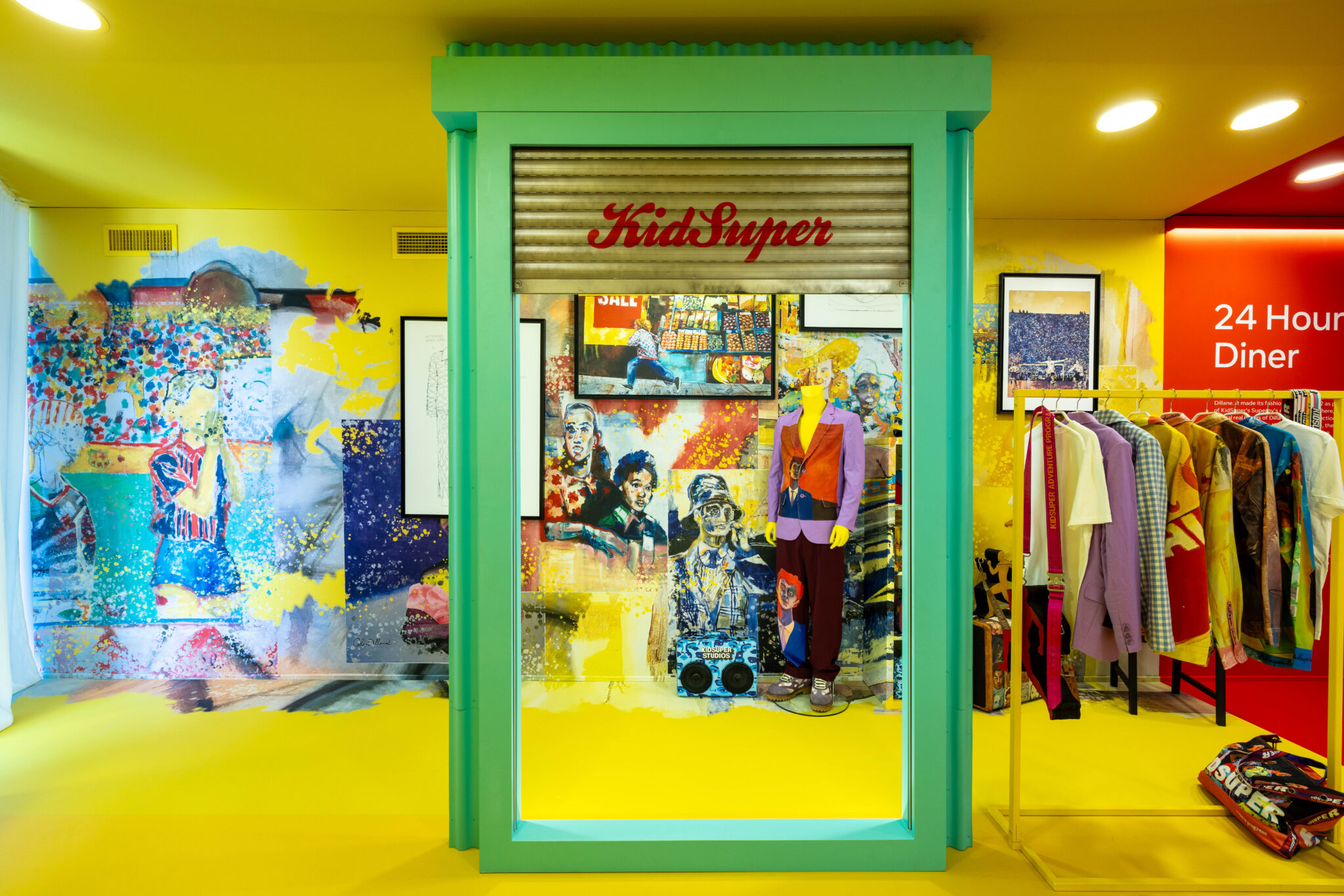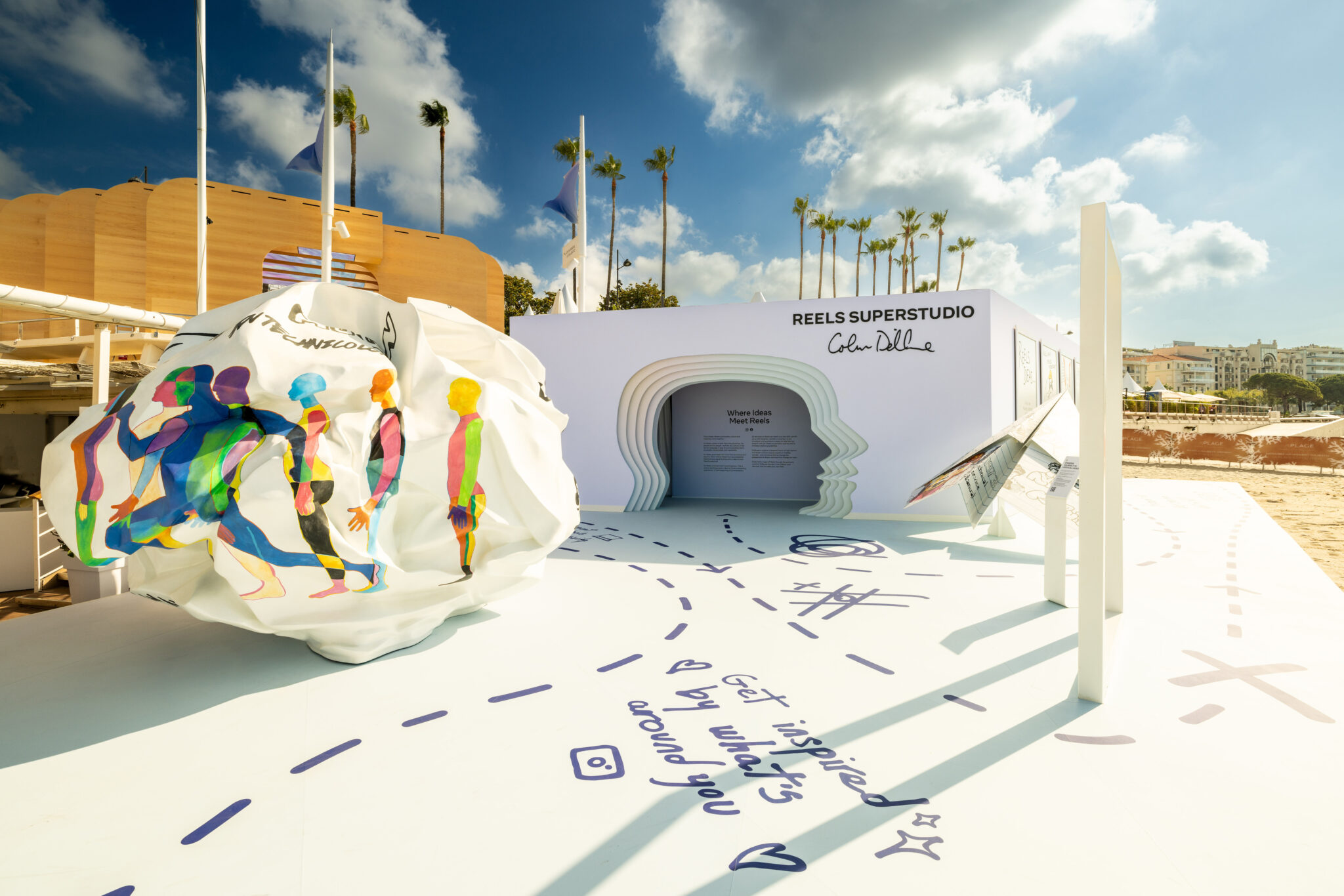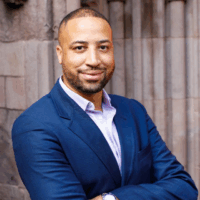The centerpiece of Meta’s activation at this week’s Cannes Lions International Festival of Creativity—where tens of thousands of executives gather to celebrate excellence in the marketing and advertising industries—was the creator-led Reels SuperStudio for the second consecutive year. But while the first collab with artist Felipe Pantone focused on how Reels’ augmented reality tools enable transitions and content development, this year’s iteration with KidSuper Studios hit on brands’ opportunities to capitalize on Reels’ explosive growth.
Meta’s backing up its pitch with impressive stats. For one, the number of Reels shared daily on the platform has doubled to two billion over the last six months, according to the brand. “Our goal was to try to educate our brand and media partners here at Cannes on the importance of all of the creative considerations and optimize best performance in Reels,” said Damien Baines, Global Experiential Lead at Meta. “We are focusing on where there are immediate opportunities and value.”
Here’s our conversation with Baines, which covers Meta’s strategic marketing goals at Cannes Lions; the origins of the KidSuper collab; the inspiration behind the activation’s design and aesthetic; and Meta’s experiential approach moving forward.
Chief Marketer: Instagram’s activations at Cannes Lions have wowed attendees and racked up industry awards in recent years—and you’ve lead the charge for the past eight. Tell us about your inspiration for this year’s activation.
Damien Baines, Global Experiential Lead at Meta: The SuperStudio originated last year with creator Felipe Pantone. We were focused on creating an exciting environment, incorporating AR for the awesome transitions and just developing great content. We built some equity in that, so we continued with the Reels SuperStudio again this year, but in partnership with KidSuper, a collaborator coming at it from a different angle.
Our intention for this is a bit more specific. Our goal was to try to educate our brand partners and media partners here at Cannes on the importance of all of the creative considerations and optimize best performance in Reels. So, that would include creating natively for 9×16 vertical, as well as the safe zones and “sound on.” You’d be surprised how many people do not create natively in that way. The flip side of that is how much the performance improves.
CM: How did you land on the particular design and aesthetic?
DB: Before you walk in, you’re met by a sculpture garden. For the partnership with KidSuper, we asked them, what are you doing right now? What are you making, creating? We wanted to make this as collaborative as possible, and his Paris Fashion show this Saturday is focused on “how to find an idea.” I thought, oh my God, this is perfect, because we think Reels is the best way to express an idea.
So, you’re met with what we are calling “totems of creativity,” these surrealist, oversized, pieces. A crumpled up ball that has some doodles and sketches on it. A paper plane, as if you’re taking a creative break. We were excited about making them extra-sized and playful, along with the spirit of the brand.
Also, you’ll see doodles on the floor—and it’s not just aesthetics. We are actually mapping how you go from the seed or the germ of an idea to [completion]. Along the outside, which you can see from the pier and up close as well, are different ideas on how to create a Reel. For instance, forced perspective: We’ve storyboarded that out to show how you can build that for yourself while you’re here at Cannes. And it’s changing every day.
CM: How are attendees guided through the experience?
DB: We have creative directors and brand ambassadors telling them about KidSuper and directing them and guiding them through the prompts. Once you enter the space, there’s an education zone, because we want to give you all of the things you need to remember before you go into the content creation moment.
We also have some stats and wonderful ideas to advance and underscore performant aspects of Reels. We have 3.8 billion people are on the platform, and over half of the time spent is with video and with Reels. Over the last six months, we’ve doubled it to having over two billion shares of Reels daily on the platform. And then 64 percent of the people surveyed [in a short-form video study by Factworks] have actually purchased a product or a service after viewing a Reel. So it has huge commercial implications. Because this is a business audience and we have so many powerful, important brands and media partners here at Cannes, these are the points that we’re trying to underscore.

Then you get into the content creation moment, and we highlight the power of sound. “Sound on” is not just about sound on or off; it’s also about the type of sound you use. You can have music—everyone’s very comfortable and familiar with that. But also of rising importance are sound effects as well as voiceover. You can do one or the other out of those three, or you can blend them together.
We also have an incredible AR effect called Doodles Scape, which basically transforms you in your environment into this big sketchpad. It’s really dynamic and underscores the KidSuper brand, the aesthetic, the super playful ethos. It launched here at Cannes and we’re going to be promoting that also at the Paris fashion show. Last year’s AR transitions, going from room to room, we wanted to keep with that. We feel that it’s very important; over 40 percent of Reels include some type of AR effect.

CM: What other ways have you tried to involve brands in the experience?
DB: We have a sizzle reel that plays in the education zone, where we are showing some of the brand-produced Reels. Because even though we see KidSuper as both the brand and creator, we wanted to highlight brands and partners that are doing their best work on the platform.
CM: To what do you attribute Reels’ growth?
DB: It’s been intentional. We have really focused on Reels since the transition from the still image to video. If this is where our audience is and this is where they’re spending time, then we want to optimize for that and empower them to create the content that they want to create and consume it as well. If you think about Instagram and all the creative tools—the alignment tools, the filters, all those things that help you make your best photograph—we’re trying to do the same thing with Reels and make it a powerful video editing tool.
CM: Last year’s activation highlighted the metaverse in a big way. How does your overall strategy differ this year?
DB: We’re still focused on the metaverse. That hasn’t really changed. For this particular audience, however, we are focusing on highlighting where there are immediate opportunities and where there’s immediate value. We are seeing this explosion of growth and success with Reels, so that’s what we’re trying to highlight. But it should be noted that there might be a perception that the metaverse is just about VR, or even with the launch of the latest Quest headset, mixed reality. It’s also AR. AR is the first step into the metaverse. So even within this Reels context, we are highlighting the metaverse and integrating that into social media platforms.
CM: In general, what’s Meta’s approach to experiential moving forward?
DB: We’re still committed—I think even more so—to bringing back in-person experiences. Moving forward, “hybrid” would be the word. The intention for the metaverse is to try to be expansive, and that means breaking down barriers and merging or blurring the lines between VR, AR and IRL. You need people to do that. People are always, and will always be, the focus of what Meta builds for.
Photo credits: Sean Ebsworth Barnes






